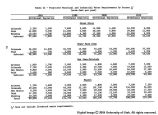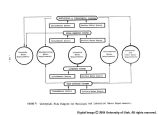| OCR Text |
Show PART III FUTURE DEMANDS Main Stem and San Juan-Colorado Subregions respectively. Upper Main Stem and San Juan-Colorado Subregions depletions in 2020 are projected to be about equal, even though the population (includes hydrologic area of Arizona) of the San Juan-Colorado Subregion is projected to be 324,800 as opposed to 204,200 for the Upper Main Stem Subregion. This is due primarily to the more intense pattern of commercial and manufacturing activity projected for the Upper Main Stem Subregion. Estimates of M&I water depletions in the San Juan-Colorado Subregion by the year 2020 show on an increase of 244 percent over 1965 conditions. This compares with 125 and 160 percent increases for the Green River and Upper Main Stem Subregions, respectively. The growth of municipal and industrial water requirements in the Upper Main Stem and San Juan-Colorado Subregions results from the expanding economies associated with the Grand Junction, Colorado and Farmington, New Mexico population centers, respectively. Due largely to the fact that the subregion economies are heavily service oriented, the domestic and commercial water use categories show the greatest water depletion require- ments for all subregions in all target years. Service Areas The Comprehensive Framework Study (Type I) defines a service area as one whose problems are interrelated and where planning for water supply and waste disposal should be carried out on an integrated basis. These areas have also been defined as Standard Metropolitan Statistical Areas (SMSA's) by the U. S. Bureau of Census. There were no SMSA's in the Region in 1965. Mesa County (Grand Junction) Colorado and San Juan County (Farmington) New Mexico, located in the Upper Main Stem and San Juan-Colorado Subregions, respectively, are projected to become SMSA's, as presently defined, during the study period. Their population projections and municipal and industrial withdrawal requirements excluding livestock requirements are given in Table 27. A major portion of the withdrawals developed for the counties would be needed in the Grand Junction and Farmington metropolitan areas. 40 |

















































































